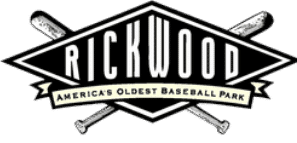See the notice for upcoming dates that Rickwood Field will be closed.
THE RICKWOOD LIBRARY: Bases Loaded With History
June 2020
Jeb Stewart
You know a ballpark has reached a vintage age when even the books chronicling its long history are themselves old. Such is the case with Tim Whitt’s 1995 book, Bases Loaded With History: The Story of Rickwood Field, America’s Oldest Ballpark, which was published just a year before the first Rickwood Classic. Whitt, a resident of Montgomery, Alabama, was a member of the Ballparks Committee of the Society for American Baseball Research (SABR) when he authored the book. He generously donated the net proceeds from its sales towards the restoration of the Rickwood.
 Whitt’s story of Rickwood’s history moves quickly through the pages of Bases Loaded With History. He begins with the formation of the old Southern League in 1885, and the increasing popularity of baseball, as Birmingham grew to become the industrial center of the South. By 1909, the Slag Pile (also known as West End Park) and its dilapidated wooden grandstand, was outdated. The Barons new owner, A.H. “Rick” Woodward, made plans for a suitable replacement, which would not simply be an improvement, but would be the finest ballpark in the south, and the first minor league ballpark with a grandstand made of concrete and steel. Whitt tells the story of the ballpark’s construction and the influence of Connie Mack, the owner and manager of the Philadelphia Athletics, who traveled to Birmingham to help design aspects of the grandstand and the playing field. Rickwood, which opened on August 18, 1910, was an unmitigated success for both Woodward and the Barons.
Whitt’s story of Rickwood’s history moves quickly through the pages of Bases Loaded With History. He begins with the formation of the old Southern League in 1885, and the increasing popularity of baseball, as Birmingham grew to become the industrial center of the South. By 1909, the Slag Pile (also known as West End Park) and its dilapidated wooden grandstand, was outdated. The Barons new owner, A.H. “Rick” Woodward, made plans for a suitable replacement, which would not simply be an improvement, but would be the finest ballpark in the south, and the first minor league ballpark with a grandstand made of concrete and steel. Whitt tells the story of the ballpark’s construction and the influence of Connie Mack, the owner and manager of the Philadelphia Athletics, who traveled to Birmingham to help design aspects of the grandstand and the playing field. Rickwood, which opened on August 18, 1910, was an unmitigated success for both Woodward and the Barons.
Carlton Molesworth, the Barons legendary manager from 1908-22, skippered the club’s first Southern Association pennants won at Rickwood in 1912 and 1914. After a period of sagging attendance and competitiveness, the Barons enjoyed their most successful campaigns from 1928-31, when the team won three pennants and two Dixie Series titles over Texas League clubs.
Whitt also delves into the early history of the Birmingham Black Barons and its stars, Satchel Paige and Mule Suttles. The team was a member of the Negro Southern and later Negro National Leagues before joining the Negro American League in the late 1930s. The Black Barons rented Rickwood Field when the Barons were on the road. With Piper Davis, Artie Wilson, Double Duty Radcliff, Bill Powell, and teenage Willie Mays (1948-50), the Black Barons won three Negro American League pennants in the 1940s, but lost in the Negro League World Series each time to the powerful Homestead Grays.
After Rick Woodward died, the Barons came under new ownership. Whitt documents the Barons’ most successful clubs in the 1940s and 50s, as well as the collapse of the Southern Association following the 1961 season. He briskly tells the story of the Barons rebirth in 1964, the formation of the new Southern League, the rebranding of the Barons as the A’s, and Reggie Jackson’s red-hot summer of 1967. However, declining attendance foretold the team leaving Birmingham after the 1975 season. Rickwood stood empty for the next five years until Art Clarkson brought the Barons back to Birmingham in 1981, which probably saved the ballpark from destruction. Whitt then recalls Rickwood’s sunset seasons, which included Southern League titles for the Barons in 1983 and 1987.
Tim Whitt successfully managed to squeeze Rickwood’s then 85-year history into just 108 concise, but well-written pages. The book is still regarded by most researchers as the starting point for any Rickwood-related research project. Unfortunately, the book is out of print and must be purchased used on Amazon or eBay. Whitt closes his book with the birth of the Friends of Rickwood and credits the Friends’ progress in restoring the ballpark. As to Rickwood’s legacy, he writes, “You can hear the echoes of ten thousand games if you listen with the heart of a fan.”
